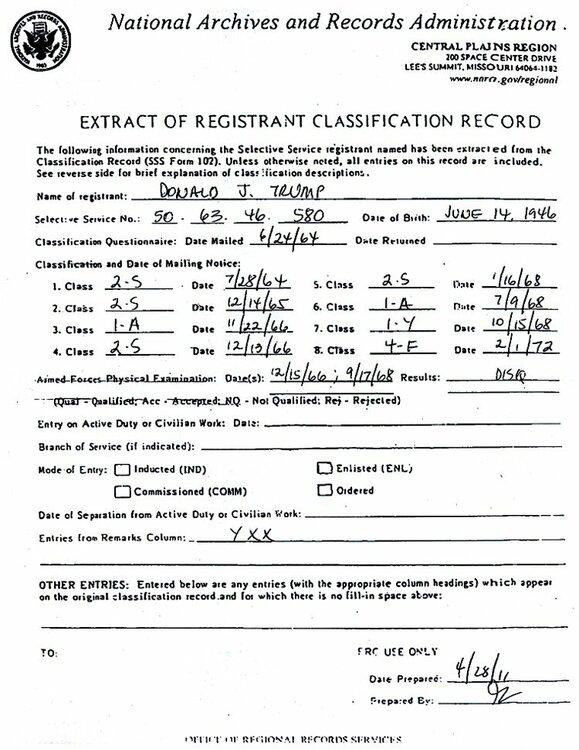-
Posts
2,160 -
Joined
-
Last visited
-
Days Won
7
Content Type
Profiles
Forums
Blogs
Events
Everything posted by Rompho Ray
-
He covers that, albeit less sensationally and more even-handedly, in the interview I linked. Open-minded people who read the interview I linked would have seen that.
-
Not much weight, considering that it doesn't indicate whether the animals were infected by the humans, or vice versa. I note that the statement was qualified as "those animals were located in the part of the market linked to the most human cases", so it would also make perfect sense that animals that could be infected by this virus would be infected by humans, rather than the other way around. I also note that "Débarre" is described in the article as "Florence Débarre, an evolutionary biologist at the French national research agency CNRS in Paris, who co-authored the first report on the animal sequences", i.e. a government scientist whose work this study debunks ...err, challenges. As I said, the debate is not settled. Open-minded people are willing to read both sides of the debate.
-
It was coined to make fun of people who believe that, so not really. Well, there's evidence that parts of the genome would be hard to find in naturally-occuring coronaviruses. Here's an example: https://www.caltech.edu/about/news/the-debate-over-origins-of-sars-cov-2 "'Caltech's David Baltimore, president emeritus and Distinguished Professor of Biology, is a virologist who received the Nobel Prize for his research into viral genetics. [...] Now, within the SARS-CoV-2 genome there is an insertion of 12 nucleotides that is entirely foreign to the beta-coronavirus class of virus that SARS-CoV-2 is in. There are many other viruses in this class, including the closest relative of SARS-CoV-2 by sequence, and none of them have this sequence. The sequence is called the furin cleavage site. To back up a little bit: In order to infect a cell, the spike protein on the surface of viruses like SARS-CoV-2 needs to first be cut, or cleaved. The cut needn't be terribly exact, but it needs to be cut. Different viruses attract different kinds of cellular 'scissors,' so to speak, to make this cut; the furin cleavage site attracts the furin protein providing the most efficient way to make a cut. You don't need a furin cleavage site to cut the protein, but it makes the virus more efficiently infectious. So where did it come from in SARS-CoV-2? There are other viruses that have furin cleavage sites, other coronaviruses, though not the family of beta-coronaviruses. So this sequence's nucleotides could have hopped from some other virus. No one has identified a virus that has exactly this sequence, but it could have come from something close, then evolved into the sequence that we see today. I'm perfectly willing to believe that happened, but I don't think it's the only way that that sequence could have appeared. The other way is that somebody could have put it in there. You can't distinguish between the two origins from just looking at the sequence. So, naturally, you want to know were there people in the virology laboratory in Wuhan who were manipulating viral genetic sequences? It's really a question of history: What happened? When I first saw the sequence of the furin cleavage site—as I've said, other beta coronaviruses don't have that site—it seemed to me a reasonable hypothesis that somebody had put it in there. Now, I don't know if that's true or not, but I do know that it's a hypothesis that must be taken seriously." In fact, there is evidence that the Bat Soup Flu virus contains a snip of the HIV virus genome: https://www.biorxiv.org/content/10.1101/2020.01.30.927871v1 "The evolution of 2019-nCoV remains elusive. We found 4 insertions in the spike glycoprotein (S) which are unique to the 2019-nCoV and are not present in other coronaviruses. Importantly, amino acid residues in all the 4 inserts have identity or similarity to those in the HIV-1 gp120 or HIV-1 Gag. Interestingly, despite the inserts being discontinuous on the primary amino acid sequence, 3D-modelling of the 2019-nCoV suggests that they converge to constitute the receptor binding site. The finding of 4 unique inserts in the 2019-nCoV, all of which have identity /similarity to amino acid residues in key structural proteins of HIV-1 is unlikely to be fortuitous in nature." The topic is, or course, not settled, and I never said it was.
-
Meanwhile, back to board members and data which don't fit that description: https://www.nature.com/articles/d41586-023-01483-2?utm_source=Nature+Briefing&utm_campaign=651bed02a7-briefing-dy-20230505&utm_medium=email&utm_term=0_c9dfd39373-651bed02a7-42575255 "Samples collected at the Huanan Seafood Wholesale Market in Wuhan, China, in the early weeks of the COVID-19 pandemic are of limited value for pinpointing which animal species — if any — infected people at the market, according to a new analysis1. Two previous analyses of the data described genetic material from various wild animals, suggesting it was possible that these animals could have passed the virus to people at the market. The new analysis attempts to identify the specific animal responsible for the spillover — but comes up empty. 'I would basically describe this as a negative result,' says Jesse Bloom, a virologist at the Fred Hutchinson Cancer Center in Seattle, Washington, who conducted the latest analysis, which has not yet been peer reviewed. 'It doesn’t say either way whether there were ever any infected animals in the market,” he says. 'It doesn’t say what the origin of the virus is.' [...] Bloom analysed data on genetic material detected in swabs collected at the Huanan market by scientists at the Chinese Center for Disease Control and Prevention (China CDC) after the market was closed on 1 January 2020 owing to concerns about an emerging virus, which was later named SARS-CoV-2. In February 2022, scientists at the China CDC published a preprint paper2 that revealed the presence of SARS-CoV-2 in a small number of environmental samples — from stalls, floors and walls — taken at the market. But the China CDC did not report on animal sequences detected in those samples and did not release the underlying data." More at link, including external links. TL;DR: Despite what governments claim, and their credulous sheep believe without question, there's still no evidence that the virus came from animals being sold in a wet market in Wuhan. In fact, even samples previously collected and claimed to provide such evidence does not.
-
Correct, and it's not even clear how much EVs help the environment, or reduce net carbon emissions, if at all. https://www.city-journal.org/article/electric-vehicles-and-carbon-emissions "The rush to subsidize and mandate EVs is animated by a fatal conceit: the assumption that they will radically reduce CO2 emissions. That assumption is embedded orthodoxy not just among green pundits and administrators of the regulatory state but also among EV critics, who take issue with a forced transition mainly on grounds of lost freedoms, costs, and market distortions. But the truth is, because of the nature of uncertainties in global industrial ecosystems, no one really knows how much widespread adoption of EVs could reduce emissions, or whether they might even increase them. (And no, this has nothing to do with the truth / joke that Teslas are coal-fired when fueled at night in many places.) While grid realities will indeed matter more than most realize, the relevant and surprising emissions wildcard comes from the gargantuan, energy-hungry processes needed to make EV batteries. This is one of those technical issues that tends to attract slogans, simplifications, and illusions of accuracy; a better understanding requires some patience. EV emissions realities start with physics. To match the energy stored in one pound of oil requires 15 pounds of lithium battery, which in turn entails digging up about 7,000 pounds of rock and dirt to get the minerals needed—lithium, graphite, copper, nickel, aluminum, zinc, neodymium, manganese, and so on. Thus, fabricating a typical, single half-ton EV battery requires mining and processing about 250 tons of materials. (These figures hold roughly true for all lithium chemistries.) For the carbon-counters tracking such things, the global mining and minerals sector uses 40 percent of all industrial energy—dominated by oil, coal, and natural gas—and that’s before we take into consideration the massive expansion that would be required to supply all the battery factories planned for widespread EV adoption." More at link, including links to external sources.
-

What are you doing right now..? (Threads Merged)
Rompho Ray replied to Lanzalad's topic in General topics
Hope nothing serious! -
^ Pad kaprao with tortilla chips?
-

Pic tr from hua hin and surrounding areas.
Rompho Ray replied to Phantom51red's topic in General topics
Looks lovely. -
Or maybe the "Obola/Foucho Flu", after the administration that it was first developed under, and the guy who supplied the government funds to finance the development. Of course, the fact that this work was first financed and developed during the presidency of Barwack Insane Obola has a lot to do with why the Washington establishment and the LMSM (redundant I realize) is so avidly covering up the origins of the virus. MUST. PROTECT. THE. PRECIOUS.
-

Royal Thai Naval Museum, Bangkok
Rompho Ray replied to Sherlock's topic in Photo's from around Thailand
Vice.com, podiatrist's daughters, family lore BWAHAHAHAHAHAHA!!!!! Priceless. Here's the record of Trump's medical evaluations: It shows that he appeared before the draft board 8 times (surely a record for a "draft dodger"), and that his final draft qualification was "4-F", or "medically unfit". Facts. Nothing but facts. I have plenty of issues with Trump, but a guy who went to military high school, and appeared before the draft board 8 times, is not who I would question about military preparedness. -

Royal Thai Naval Museum, Bangkok
Rompho Ray replied to Sherlock's topic in Photo's from around Thailand
Given that the marking is on the detachable diving weight, and not on the helmet itself, I'd say that it was intended to distinguish the front weight from the back weight. https://www.antiquedivehelmets.com/product.php?id=351&categoria=1 Claiming anything doesn't really help unless the military doctors who check the recruit agree that the recruit has the condition. Isn't it just around the corner from Soi Cowboy? -
^^^Yup, and The Thais eat the ones that don't incinerate themselves on power lines.
-

What are you doing right now..? (Threads Merged)
Rompho Ray replied to Lanzalad's topic in General topics
Easing back into the work week by posting on here. -
I can see the whole article. Just click the "v" shaped arrow to the right and the subscription begging at the bottom should slide down and let you read the article.
-
Kai yad sai is one of my favorite meals. I order it in restaurants over there as a side dish sometimes too.
-
Depends what you mean. Generally, the operating system will not stop working properly. I have a Windows 7 laptop here in my office/man cave and it works fine. What happens is that once they stop updating the OS, new programs become less and less compatible with it, and you lose the ability to install it on newer machines. The latter is not usually an issue, but when they EOL (end-of-life) the operating system and stop updating it, you might want to turn off automatic updates on any programs that have that option. According to Micro$oft, the current version of Windows 10, 22H2, will be the last. It will stop being supported in October 2025, which is when newer computers, programs and versions will begin to be less compatible with it. https://learn.microsoft.com/en-us/lifecycle/products/windows-10-home-and-pro
-
I just tried this with Windows 10 and it behaved as you describe. I opened a window with a single tab in Chrome and maximized the window with the maximize button to the right on the title bar. It wouldn't let me drag that window either with the title bar or with the tab. I don't think it has ever been possible to click and drag a maximized window. I just tried it with Word and got the same result.
-
It's probably a feature of your web browser. Here's how to turn it off in some popular browsers: https://www.wired.com/story/how-to-turn-off-autoplay-in-browser/
-

What are you doing right now..? (Threads Merged)
Rompho Ray replied to Lanzalad's topic in General topics
Ditto. I solved that problem by marrying a Thai chick. -

What are you doing right now..? (Threads Merged)
Rompho Ray replied to Lanzalad's topic in General topics
You're single I take it? -

What are you doing right now..? (Threads Merged)
Rompho Ray replied to Lanzalad's topic in General topics
It's a breeze to do yourself. It simply screws into the fresh water line to the tank. Just do it and tell the little ingrate later. He'll thank you after he uses it the first time! -
It worked for you, so maybe it's worthwhile. Out. Feel free to make your last lame attempt to appear clever to anyone but yourself.
-

What are you doing right now..? (Threads Merged)
Rompho Ray replied to Lanzalad's topic in General topics
I'm pretty sure it's not legal to do that any more. Of course, TIT... -
Next time will be the first, so no, not really. I do get bored with you struggling to justify your unwarranted feelings of adequacy with these silly hair-splits though. It's not uncommon to name a virus after the disease it causes. The acronym SARS, which stands for what I said it does as even your source confirms, was around before the SARS-CoV2 virus. I can see how a disease having two names might confuse, let's say, less sophisticated people. So, how did you make out getting the CDC to change their website?










